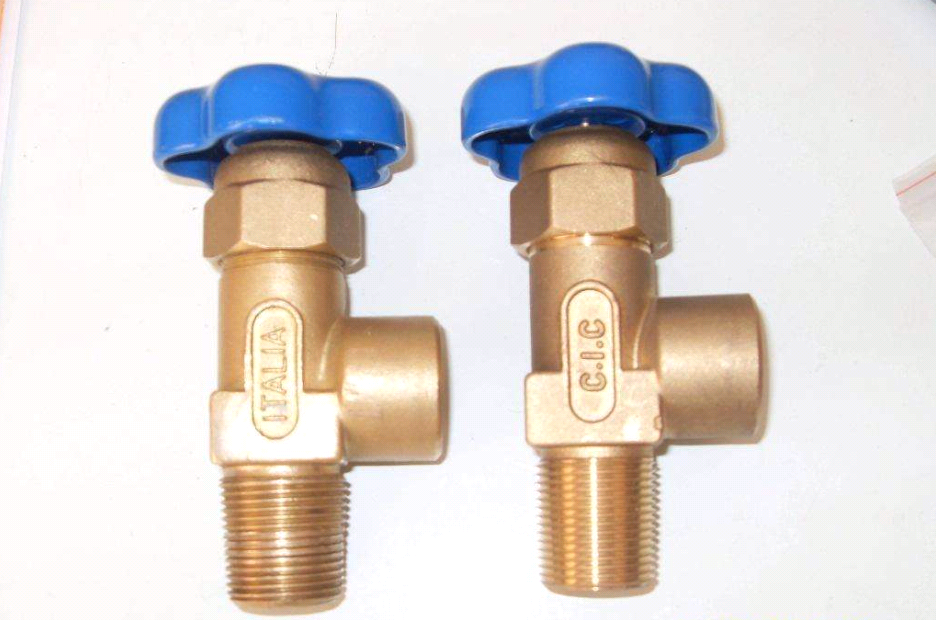12、 Whether the material, structural type and side nozzle connection type of the cylinder valve meet the requirements of the nature of the gas to be filled, and whether the remaining number of threads of the tapered tail connection thread meet the technical requirements.

What kind of material and structure type of cylinder valve the cylinder is equipped with is a non negligible inspection content, because the material and structure are directly related to the service life, sealing performance, gas quality, fire and explosion prevention and other safety issues of the cylinder valve. As previously mentioned, the cylinder valve on the oxygen cylinder uses copper valve instead of steel valve, because copper valve is more resistant to corrosion than steel valve and is not easy to produce sparks; The cylinder valve on the liquid ammonia bottle uses steel valve instead of copper valve, because steel valve is more resistant to ammonia corrosion than copper valve; To dissolve the cylinder valve on the acetylene cylinder, only the copper gold valve with copper content less than 70% can be used instead of the copper valve, because the contact between the copper alloy valve and acetylene can not generate a very explosive copper acetylene, but can generate a very thin, dense, non falling, non explosive copper mold that can prevent the continuous generation of copper acetylene; For the cylinder valves on special gas cylinders, the diaphragm cylinder valves with good sealing performance must be used to prevent the quality of the gas in the cylinders from dropping, leakage of toxic gas or other hazards.
For cylinder valve handles of combustion supporting and combustible gas cylinders, check whether the materials meet the requirements of the nature of the gas contained. According to the technical requirements, the handle material shall be flame retardant. If it is found that the handle does not have flame retardant property during the inspection, it shall be replaced to facilitate the timely closing of the bottle valve to cut off the fire source and reduce disasters when the bottle valve sprays flame or a fire alarm occurs.
The material of the cap on the side nozzle of the bottle valve is also checked. Plugs made of materials that do not conform to the nature of the gas contained shall be replaced to prevent the cap from being damaged or other accidents caused by leaky gas from the cylinder valve.
When removing the plug cap from the side nozzle, the human body should stand on the side of the side nozzle, and no one is allowed to stay on the opposite side of the side nozzle to prevent injury due to the impact of the pressurized plug cap due to the loose cylinder valve. The cap can only be removed after confirming that the bottle valve is closed.
The action of removing the side nozzle cap should be slow. First unscrew 1/4 of the thread, and then gradually loosen it after listening to no air release. Loosen 1/4 thread each time, and then wait for a moment. If you hear the air release sound, stop the loosening immediately, and remove the cap after the air is released completely. The volume of the cap is very small, even if there is gas, it will be discharged quickly. If the gas is discharged for a long time, it indicates that the cylinder valve is not tight and the gas in the cylinder leaks out. In this case, the operator should carefully check whether the bottle valve is not closed tightly. Confirm that gas leakage occurs when the cylinder valve is closed, and establish necessary measures according to the nature of the gas in the cylinder. If the gas in the bottle is non-toxic and harmless, do not touch the cap until the gas is discharged; If the gas is toxic and harmful, the cap must be slowly rotated to prevent gas leakage under the condition of good protection and no dumping of the cylinder. Then make a mark and transfer the gas cylinder to the gas cylinder regular inspection station for treatment.
The screw connection type of the side nozzle of the bottle valve is divided into left and right screw threads;
The connection thread of the side nozzle of the cylinder valve for combustible gas is left handed (reversed);
For the cylinder valve used for non combustible gas, the connecting thread of its side nozzle is right-handed (positive thread);
The number of remaining threads of the conical tail connecting thread of the bottle valve shall not be less than 1 thread and shall not be more than 5 threads.
While checking the connecting thread of the tapered tail, pay attention to whether the sealing filler between it and the bottle mouth thread meets the requirements of the nature of the gas contained. The sealing filler used for combustion supporting and combustible gas shall not react with the gas chemically and be combustible. At present, the vast majority of gas cylinders use Teflon raw material belt, which is also combustible. As for yarn ends, hemp threads and ordinary plastic belts, they are not allowed to be used as fillers.
In the inspection, if the cylinder valve material, structural type or side nozzle thread connection type is found to be inconsistent with the nature of the gas to be filled, it shall be marked and listed as the key cylinder for gas quality analysis.
If the cylinder valve is not tightly capped for pressure bearing, the number of remaining threads of the tapered tail connection thread and the filler do not meet the technical requirements, the third item above shall be followed for treatment.